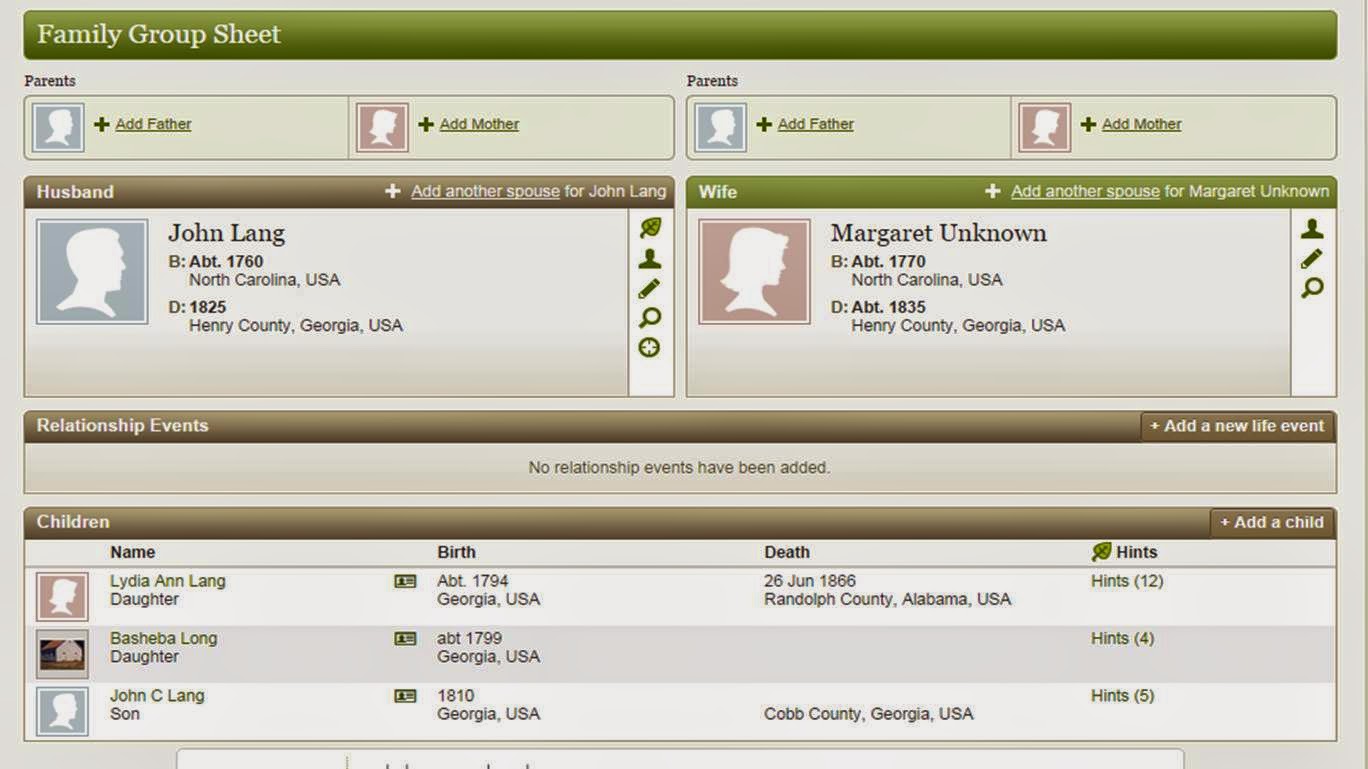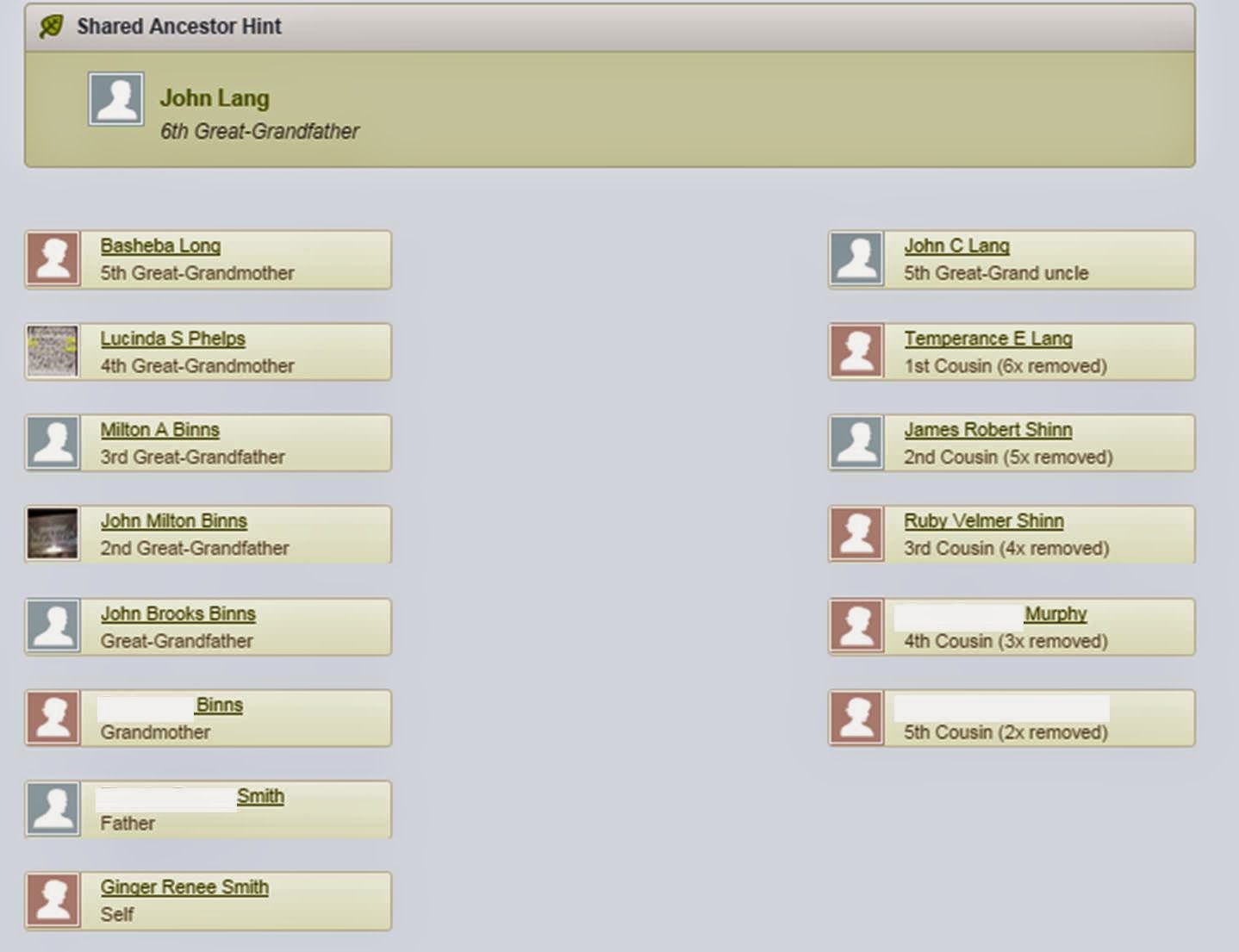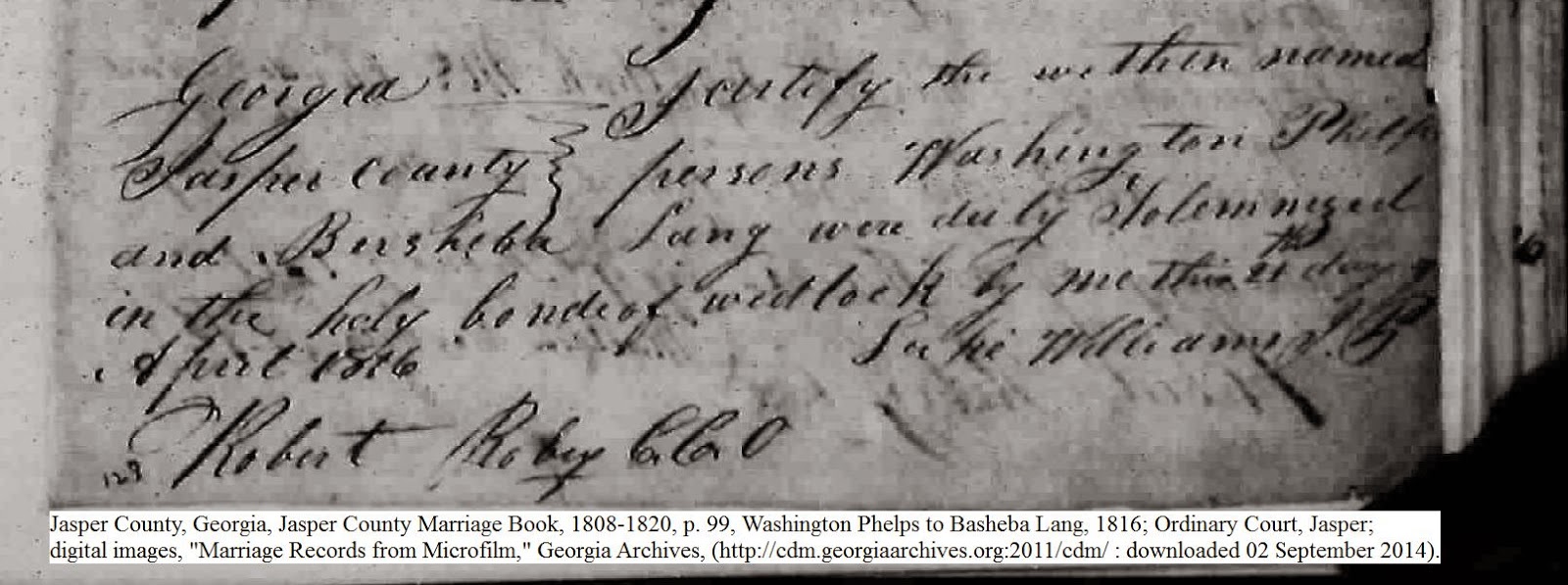 |
| FGS Report of my Lang Ancestors |
This is the second post in a series about my AncestryDNA results. In
Part 1, I discussed a 3rd cousin match I had found. I found him by looking at my top matches and clicking on one. He was one of two 3rd cousin matches. I clicked on his name, glanced at his tree which contained only 9 people, and immediately identified the connection. Even though I knew right off the bat what our connection was, AncestryDNA did not provide a Shaky Leaf "Hint" because he had not added enough people to his tree (remember I said he had only 9 people in it?). I'm sure that once he starts adding people to his tree, including his 1st, 2nd, and 3rd great-grandparents, whose names I gave to him, a shaky leaf will eventually appear.
The Shaky Leaf and How I found My Next Match
My DNA matches are sorted by relationship by default, with the closest relationships at the top of the list. Although a relationship is
predicted, it is not guaranteed that a connection will be found and I will be able to place my match on my family tree. Another way to look at my valuable matches, is to sort by "Hints" represented by, you guessed it, those shaky leafs! In order to see my
"Hints" I clicked on the "Hint" filter at the top of the page. This resulted in two pages of matches - about 100 total matches. I found my match to S.A.T. on page 2.
The Relationship Report
When I clicked on S.A.T.'s name, I got a report that told me the following:
- Our predicted relationship was Distant Cousins
- There was a Possible Range of 5th - 8th cousins
- There was a Confidence of Very Low
This looked pretty dreary at first. But then I scrolled down. This is where the Ancestor
"Hint" came in. I was presented with a Relationship Report showing me how I was related to my match and who our common ancestor was based on that relationship. According to this relationship report, our common ancestor was
John Lang, my 6th Great-Grandfather.
This comparison was run by the Ancestry.com servers (in the background - Ancestry.com people say it's an
algorithm). For every match that has a tree, the servers run a side by side comparison between their tree and mine and when they find someone in both trees that looks like the same person and it is a direct ancestor of both people, they determine it to be a "shared ancestor."
 |
| Relationship Report with Ginger Smith on the left and my Match S.A.T. on the right |
Finding DNA evidence linking my 5th great-grandmother to John Lang has been pretty instrumental to my research. And evidently, it was instrumental to my match's research as well, so she was pretty excited to learn of the match. We both had conflicting evidence about our Lang/Long ancestors that had yet to be resolved.
My Research Problem - the Lang/Long Conundrum
My 4th great-grandmother, Lucinda Phelps, and her husband, Burwell Binns, moved with their families from Talbot County, Georgia to Drew County, Arkansas about 1856. Lucinda's mother, Basheba Lang/Long and step-father, Green Berry Jackson also moved with them. Burwell died there in 1866 and his wife Lucinda died shortly after in 1870. Both Burwell and Lucinda were buried in Beulah Cemetery in Veasey, Drew County, Arkansas on land they donated to the Beulah Baptist Church.
Basheba and Green Berry died after Lucinda and Burwell, however, their final burial place is unknown at this time, but presumed to also be in the Beulah Church Cemetery. There is a piece of paper that someone tacked up behind the glass at the Beulah Church Cemetery entrance that talks about Lucinda's parents, including her mother, Basheba LONG:
Here is a transcript of this informative paper:
"Basheba LONG married Washington Phelps 21 April 1816 at Randolph GA. We have knowledge of one daughter, Lucinda Phelps, being born to them.
I. Lucinda Phelps (born 22 Oct 1818 in Jasper Co GA) Lucinda married Burwell Binns II in GA on 29 Oct 1835. The had ten children and this is the Binns family who settled in the Beulah Community of Drew County. The children were: Milton, Sarah, Elizabeth, Lucinda, Matilda, Edna, Mary Jane, Christopher, and Burwell III.
Basheba Phelps married Green Berry (sometimes called Greenberry) Jackson 21 March 1823 in Jasper Co GA. Court records show Green Berry Jackson as being appointed guardian of Lucinda Phelps (dau of Washington Phelps) sometime after 1823. We have knowledge of 4 children belonging to Green Berry and Basheba Jackson and the names of 3. By the time Green Berry and Basheba Jackson got to Arkansas, Basheba was spelling her name Barshaby. We don't know when this family arrived in Drew County; but they were here by 1857. Children of Green Berry and Barshaby Jackson are: ...."
In this write up, Basheba's last name is "LONG." However, on Basheba and Washington's marriage record recorded in Jasper County, Georgia, she is listed as Basheba LANG.
 |
| Washington Phelps & Basheba LANG Marriage Record Jasper Co GA, 1816 |
Here is the transcript of the marriage record filed in Jasper Co., Georgia:
Georgia ))
Jasper County ))
I certify the within named persons Washington Phelps and Bersheba Lang were duly Solemnized in the holy bond of wedlock by me this 21st day of April 1816.
Luke Williams, J. P.
Robert Robey, C.C.O
So far, we now have two conflicting pieces of documentation for Basheba's surname. The paper posted at the cemetery said her last name was LONG and the marriage record said her last name was LANG.
But I wasn't the only one with conflicting documentation. My match had run into similar issues with her family.
My Match Has the Same Lang/Long Conundrum
According to my match, her 2nd great-grandmother was Temperance Lang who was born 1850 in Stone Mountain, DeKalb Co., GA and died 1928 in DeKalb Co., GA. On her death certificate, the informant listed her father's name as John C. LONG, however, on every other record she encountered, including the death certificates of Temperance's siblings, her father's name was listed as John C. LANG.
With DNA testing, we were able to confirm that our two lines were related and that her John C. LANG was the sibling of my Basheba LONG. I had previously connected to another sibling, Lydia Lang via a DNA match as well, so I knew we were on the right path.
In this case, DNA helped to solve two mysteries and hopefully put the Lang/Long conundrum to rest.
As you can guess, I will be looking for additional documentation on my Basheba Long/Lang in order to determine if she changed her name, went by both names, or just didn't bother correcting the county clerks who wrote up various documents for her.
I would love to hear if DNA has helped to resolve any of your name conflicts. Please leave a comment below or
email me directly.


























